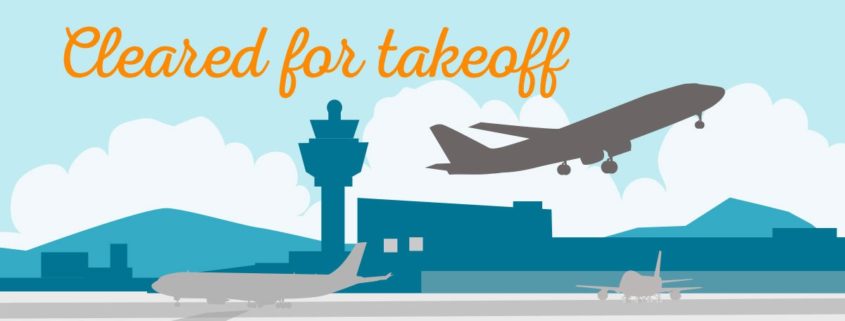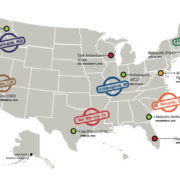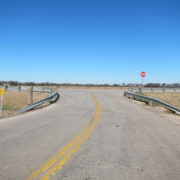San Marcos Regional Airport looks to raise profile in FY 2016
Community Impact Newspaper
By Brett Thorne
September 16, 2015
Since August 2014 the San Marcos Regional Airport has changed its name and undergone a series of capital improvements aimed at expanding its capacity. Now Texas Aviation Partners, or TAP, the private company that manages the airport, is hoping to elevate the facility’s profile to attract more business.
The airport has historically operated at a deficit averaging about $20,000 in each of the past three fiscal years. But an Aug. 18 council vote to restructure the Airport Commission—the appointed body that advises council on airport matters—and allow TAP to increase fees at the facility in fiscal year 2015-16, which begins Oct. 1, may be a signal that business at the airport is cleared for takeoff, said TAP Co-founder Stephen Alexander.
Alexander said the fee increases, which apply to rentals of hangars, shelters and storage facilities at the airport, should help TAP turn the facility into a revenue-generating asset for the city. The next step will be to focus on promotion of the airport, he said.
“There are a lot of things cities do very, very well,” Alexander said. “Emergency services rank up there. When it comes to an enterprise fund, which the airport is, it’s supposed to make money. City government is not in the business of thinking like private enterprise and publicizing their product.”
Airport Control
The city’s Sunset Advisory Commission—an appointed group responsible for advising council on the necessity of various boards and commissions—recommended council dissolve the Airport Commission. Chuck Nash, chairman of the Airport Commission, agreed with that recommendation, conceding in a letter to City Council that TAP is best suited to “run the airport like a business.”
“I would like for the group that’s getting paid to run the airport [to] run the airport and not have to go to a commission and legal and then council for a lease amendment,” Council Member Ryan Thomason said at the Aug. 18 meeting. “We’re putting too many obstacles … in the way of being productive.”
The potential dissolution of the commission caused concern among some council members, who feel the city needs to maintain some level of involvement with what many officials consider a major asset in the area.
“I like the idea of letting TAP run the business of the airport, but I’d like to add that we want the Airport Commission to not run the day-to-day [business], because we have [TAP] for that, but to be involved in the promotion of the airport,” Council Member Jane Hughson said.
The airport’s revenue comes from three sources: property rentals, collecting a percentage of revenue from jet fuel dispensed at the facility and collecting 1 percent of all revenue from business conducted at the airport. The decision to allow the increase to rental rates is one step on the road to running the airport more like a business, Alexander said.
Council opted to keep the restructured commission in place and plans to reassess operations at the airport in 2016.
Airport’s Economic Effects
TAP Marketing Director Cassidy Berenato said she thinks most San Marcos residents are not familiar with the airport—a city-owned asset similar to a public library or park—because they do not use it on a regular basis. The airport does not offer airliner service like Austin-Bergstrom International Airport or San Antonio International Airport, so most of the population never interacts with it, she said.
“If you don’t know anything about general aviation airports, all you see is, ‘Those must be some rich guys out there using all my tax dollars so they can go play on the weekend,’” Berenato said. “That couldn’t be further from the truth when you really get down to it.”
Last year there were 51,189 takeoffs and landings at SMRA. Many of those were from companies based in San Marcos or with locations here, Berenato said.
In addition to recreational aviation, the airport also provides local businesses—McCoy’s Building Supply and Ingram Readymix are two San Marcos-based companies that lease hangars at SMRA—with a major advantage over nearby communities, Berenato said.
McCoy’s Building Supply CEO Brian McCoy said his company keeps two aircraft at the airport and uses them weekly. McCoy said the amount of time it takes to fly out of SMRA helps ensure his management team’s travel is as efficient as possible.
Flying out of ABIA, for instance, would require at least 90 more minutes because of travel on I-35 and passing through secured access, Alexander said. Congestion at SMRA is virtually non-existent because of the relatively low number of daily takeoffs and landings compared with an international airport with passenger airline service.
“I can’t even fathom [having to go to ABIA or SAIA],” McCoy said. “We try to get [to SMRA] a few minutes before takeoff, but they’ve already got the plane inspected and fueled. It’s just a matter of closing the doors and going.”
During the economic downturn in the late 2000s, McCoy said constant face-to-face contact with the company’s 2,000 employees and 83 stores throughout the southern United States—facilitated by air travel through SMRA—helped the company survive the tumult.
Regional Airport
This summer the idea of a regional airport serving San Antonio and Austin picked up steam, reviving a conversation that TAP Co-founder Jim Wimberley said has been happening for years.
SMRA, with its existing runways and proximity to both cities, would be a logical place for a new regional airport, but Wimberley said he is not sure the concept holds much weight. SAIA and ABIA both have potential to expand far beyond their current capacity, he said.
“In theory, the city of Austin will never need a new airport,” he said. “Same for San Antonio. Why do you [talk about regional airports here] other than it’s a nice little interesting buzzword?”
Hughson said discussion of SMRA’s regional importance has been happening at the city level for decades.
“Kathy Morris was mayor from ’88 to ’96, and she was talking about what a jewel we have in the airport and what future potential is there,” she said.







